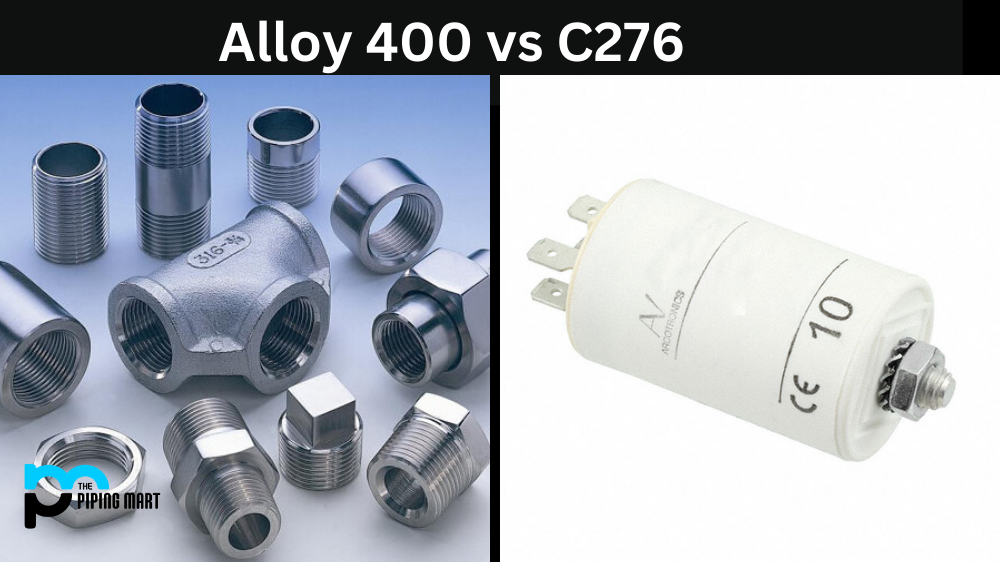When selecting the suitable alloy for your industrial application, you must consider several factors, including resistance to corrosion, strength, chemical compatibility, temperature, and cost. Two of the most popular alloys used in various industries are Alloy 400 and C276. Although both these alloys offer several advantages, they differ in composition, properties, and cost. In this blog post, we’ll compare alloy 400 and C276 to help you make an informed decision.
Difference Between Alloy 400 and C276
Composition
Alloy 400, also known as Monel, is a nickel-copper alloy with a high percentage of nickel (about 60%) and copper (30%). It also contains small quantities of iron, manganese, and other elements. On the other hand, C276 is a nickel-molybdenum-chromium alloy that also includes tungsten and iron. C276 has a higher percentage of nickel (around 55%) as compared to molybdenum (15%), chromium (16%), and tungsten (4%). The difference in composition leads to varying properties among the two alloys.
Corrosion Resistance
Alloy 400 is highly resistant to corrosion from a wide range of acids, alkaline solutions, and salts, making it suitable for various applications, including marine, chemical processing, and oil and gas. However, it is not recommended in oxidizing environments or applications involving high temperatures. On the other hand, C276 offers better resistance to corrosion in oxidizing and reducing atmospheres and is more suitable for applications in chemical processing, waste treatment, and marine engineering.
Mechanical Properties
Alloy 400 has excellent mechanical properties, including good ductility, strength, and toughness, making it ideal for applications that require high strength and pressure resistance. However, it has lower tensile strength and hardness as compared to C276. C276 offers high strength, hardness, and corrosion resistance, making it ideal for highly corrosive and high-temperature applications.
Cost
The cost of an alloy is a significant factor to consider when selecting the right one for your application. Alloy 400 is relatively cheaper than C276, making it an excellent option for applications that do not require high-temperature or aggressive corrosion resistance. However, C276’s high cost is justified by its superior resistance to corrosion and high-temperature environments, making it a popular option in several critical industrial applications.
Application
Alloy 400 is commonly used in marine engineering, chemical processing, oil and gas, and classical applications, including pipes, tanks, valves, and pumps. C276, on the other hand, is ideal for aggressive chemical environments, high-temperature applications, and applications requiring high strength and pressure resistance, including chemical processing, volatile waste treatment, and biomass conversion.
Other Differences
- Alloy 400 is a nickel-copper alloy that offers excellent resistance to corrosion in a wide range of media, including salt water, acid solutions, and alkaline solutions.
- Alloy C 276 is a nickel-chromium-molybdenum alloy that offers excellent resistance to corrosion in both oxidizing and reducing environments.
- Alloy 400 is more corrosion-resistant than Alloy C 276 in salt water and acidic solutions.
- Alloy C 276 is more corrosion-resistant than Alloy 400 in alkaline solutions.
- Both alloys offer excellent resistance to pitting and crevice corrosion.
- Alloy 400 is less resistant to stress corrosion cracking than Alloy C 276.
- Both alloys offer excellent resistance to intergranular corrosion.
- Alloy C 276 is less expensive than Alloy 400.
Conclusion
When selecting between two alloys, it is crucial to consider their composition, resistance to corrosion, mechanical properties, cost, and application. Alloy 400 and C276 differ significantly in their properties and application, making them suitable for different industrial settings. However, with the above comparison, we hope you can make an informed decision and select the suitable alloy for your application.

Pipingmart is a B2B portal that specializes in metal, industrial and piping items. Additionally, we share the latest information and information about materials, products and various types of grades to assist businesses that are involved in this business.




